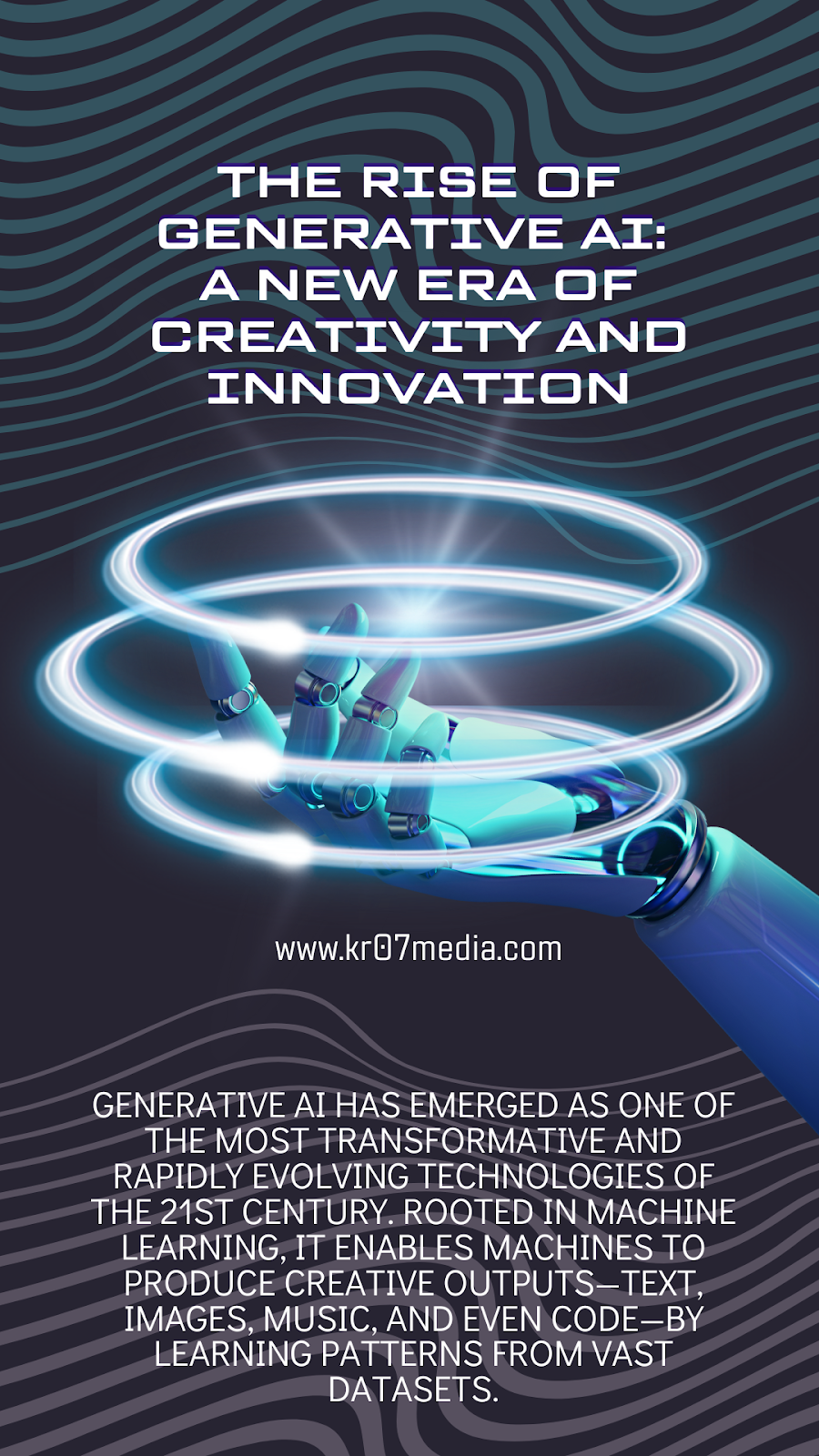Generative AI has emerged as one of the most transformative and rapidly evolving technologies of the 21st century. Rooted in machine learning, it enables machines to produce creative outputs—text, images, music, and even code—by learning patterns from vast datasets. This branch of AI holds immense potential, not only in revolutionizing industries but also in challenging our perceptions of creativity, automation, and the role of technology in our lives.
What is Generative AI?
At its core, generative AI refers to algorithms that can generate new content based on the data they’ve been trained on. This is different from traditional AI, which primarily focuses on recognizing patterns or making predictions based on input data. Generative AI goes beyond that by creating new, original content.
The technology typically relies on deep learning models, especially generative models such as Generative Adversarial Networks (GANs) and Variational Autoencoders (VAEs). More recently, transformer-based architectures, such as GPT (Generative Pretrained Transformer), have enabled breakthroughs in natural language processing, giving rise to conversational agents, code generation tools, and more.
Applications Across Industries
Generative AI’s versatility has opened doors to its adoption across a variety of industries, including:
1. Art and Design:
AI-generated artwork has gained significant attention in recent years, with some pieces even being sold at auctions for substantial amounts. Artists use AI tools to generate novel designs, enhancing human creativity by offering new perspectives.
2. Content Creation:
In the realm of writing, generative AI models like GPT-3 and its successors can create human-like text for marketing, journalism, and storytelling. These systems help content creators by generating drafts, suggesting ideas, or even writing complete articles or stories.
3. Music Composition:
Generative AI is also reshaping the music industry. AI can compose music in various styles, assist musicians with ideas, and even produce entire soundtracks. Some AI-composed pieces have been used in movies and video games, blending seamlessly with human compositions.
4. Gaming and Virtual Environments:
In gaming, generative AI helps in creating vast, dynamic worlds and NPC (non-player character) dialogues that evolve in real time. Procedural content generation makes games more immersive and unpredictable, enhancing the user experience.
5. Healthcare:
In healthcare, generative models assist in drug discovery by generating new molecular structures. AI-generated images and data are also used in medical imaging, enabling faster diagnoses and treatment plans.
6. Code Development:
Tools like GitHub Copilot, powered by AI models, are reshaping the way developers write code. By generating suggestions, completing code snippets, or debugging code, generative AI is helping software engineers increase productivity and reduce errors.
Ethical Considerations
As generative AI continues to develop, it raises several ethical concerns:
1. Deepfakes and Misinformation:
Generative AI has been used to create hyper-realistic fake images and videos, commonly referred to as "deepfakes." These can be misused for disinformation campaigns, identity theft, and other harmful purposes. The challenge is to ensure that AI-generated content remains distinguishable from genuine content.
2. Copyright and Ownership:
Who owns the rights to AI-generated content? This question is becoming increasingly significant. Artists, musicians, and creators are concerned about how AI-generated works might infringe upon or replicate their original creations, leading to potential legal battles over ownership.
3. Bias and Fairness:
Generative AI models are trained on vast datasets that often contain inherent biases. If these biases are not addressed, the AI can generate biased content, reinforcing stereotypes or misinformation. Ensuring fairness and inclusivity in AI-generated outputs is a crucial challenge.
The Future of Generative AI
The future of generative AI is both exciting and complex. As the technology becomes more advanced, its potential to augment human creativity seems limitless. However, it will be essential to balance innovation with responsibility.
Future developments may focus on improving the accuracy, creativity, and ethical use of these models. We can also expect tighter regulations, particularly around the use of AI-generated content in areas like news, entertainment, and social media, where authenticity is paramount.
Conclusion
Generative AI stands at the intersection of creativity, technology, and ethics. It’s reshaping industries by automating tasks, generating novel content, and expanding the boundaries of what’s possible. However, its rapid advancement also requires careful consideration of its societal impacts. Balancing innovation with ethical responsibility will be key to ensuring that generative AI continues to enhance human creativity without compromising trust or fairness.
As we move further into this new era, the question isn't just about what AI can create, but how we can use it to enrich human life responsibly and thoughtfully.



